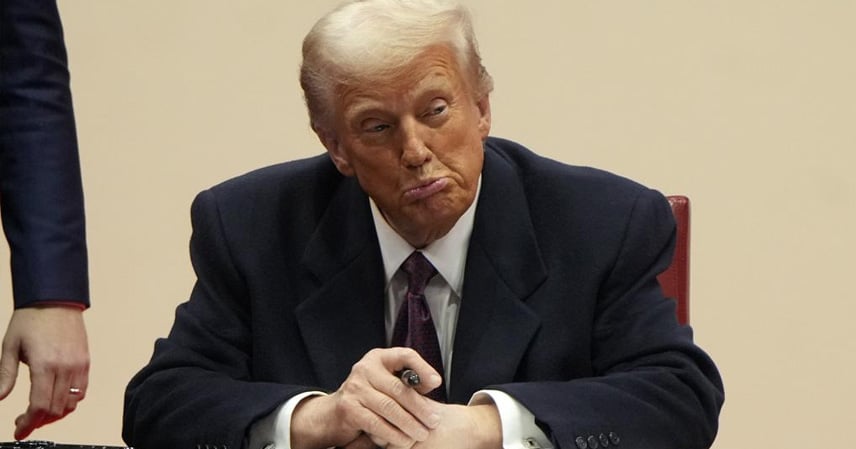The United States has unleashed a sweeping new wave of sanctions, targeting over 3,000 Chinese companies in a bid to halt China’s access to American semiconductor technology. Such scale is rare in international trade history.
On September 29, the U.S. Department of Commerce introduced its new “penetrating rule” on export controls. Under this framework, any company listed on the Entity List will automatically extend restrictions to subsidiaries where it holds more than 50% ownership. Moreover, companies where sanctioned firms hold even minority but significant stakes will face stricter due diligence on shipments. In short, parent firms, subsidiaries, and even sub-subsidiaries are all brought under U.S. sanctions.
A Shift From Point Strikes to Blanket Coverage
Traditionally, the Commerce Department’s Entity List operated as a “name-by-name” tool. This time, the Bureau of Industry and Security (BIS) has shifted to systemic coverage, meaning one sanctioned firm can trigger restrictions across an entire corporate structure.
This regulatory expansion pushes the scope from a few hundred companies to thousands. According to the Financial Times, citing WireScreen research, the rules affect thousands of subsidiaries under major Chinese state-owned groups and private enterprises, reaching deep into supply chains.
This marks a systemic upgrade: export control is no longer piecemeal but institutionalized. By adopting principles similar to those of the U.S. Treasury’s Office of Foreign Assets Control (OFAC), Washington aims to close loopholes and eliminate ambiguity for suppliers.
The result: many U.S. firms now adopt a “cut-all-ties” approach, avoiding cooperation with any Chinese entity that might be linked, even indirectly.
Mounting Risks and Global Fallout
Officials frame the move as a way to “close loopholes,” but the reality is increased compliance risk and uncertainty for multinational companies. Tracing ownership structures across layers of subsidiaries is resource-intensive, and mistakes could lead to severe penalties.
Industry analysts describe this as a “whack-a-mole dilemma”—no matter how long the list grows, firms may still find workarounds. Instead of closing gaps, blanket controls risk dragging in companies with little direct conflict with U.S. interests, further pressuring global supply chains.
European and Southeast Asian firms now fear that Washington’s approach could undermine U.S. credibility as a reliable trade partner.
Impact on Chinese Companies
For Chinese enterprises, the short-term shock is real—especially in semiconductors and artificial intelligence. Many face outright denial of export licenses, while international clients preemptively suspend cooperation out of fear of restrictions. The immediate consequences are declining orders and broken supply chains.
Beijing has strongly opposed the move. A spokesperson from China’s Ministry of Commerce denounced the U.S. for “disrupting market rules and international trade order” and vowed to take necessary countermeasures to protect the rights of Chinese firms.
China’s Potential Countermoves: The Rare Earth Card
One likely tool is rare earth resource control. Rare earths are essential in missiles, fighter jet engines, and next-generation batteries—all critical to the U.S. defense industry. Any disruption would have severe consequences.
In September, China restricted rare earth-related exports to three U.S. defense contractors: Huntington Ingalls Industries, Flatirons Solutions, and Global Dimensions. The sanctions are notable because Huntington Ingalls is the U.S.’s only builder of nuclear-powered aircraft carriers, and others are key to naval production. These moves touched a core vulnerability in the American military supply chain, heightening domestic anxiety.
Thus, a systemic U.S. approach is now met by a resource-based Chinese response, forming a new type of stalemate.
Beyond Resources: Legal and Institutional Retaliation
China could also mirror Washington’s tactics by using its own Unreliable Entity List or Export Control List to restrict certain U.S. firms. Such actions would not only affect their China operations but also ripple through global supply chains.
In essence, Beijing may adopt “reciprocal measures”—using Washington’s playbook against American firms. This potential deterrent forces U.S. policymakers to reconsider the costs of escalating restrictions.
The Bigger Picture: Institutionalizing Export Controls
Beyond the immediate sanctions, the long-term significance lies in institutionalization. Export control has shifted from a flexible tool to a fixed regulatory framework that is unlikely to be reversed.
For Chinese firms, even legitimate commercial partnerships could face automatic rejection under the new system. But such rigidity also imposes self-limitations on the U.S. Without access to Chinese markets and cooperation, American firms may lose revenue streams and reduce R&D investment, weakening their innovation capacity.
The Road Ahead: Fragmented Supply Chains
The confrontation is unlikely to produce outright victory for either side. Instead, the global supply chain is set to become more regionalized and diversified. The U.S. will double down on institutional frameworks, while China accelerates indigenous R&D and leverages its resource advantages.
The clash of systems versus resources is shaping a new phase in global economic and technological rivalry.
References
- Financial Times, WireScreen research data
- Official statements from China’s Ministry of Commerce



